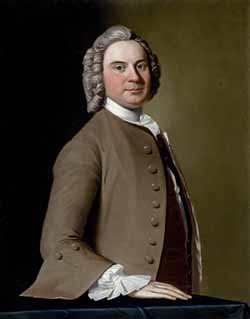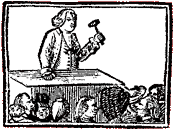“The pistols were not heard by a single person”
After a bare-bones report on the duel, the 16 June Columbian Minerva of Dedham reported:
Miller passed thro this town to the southward, on the morning of the same day, in a coach, attended only by his second.That second was Lewis Warrington (shown here), a nineteen-year-old midshipman in the U.S. Navy. Warrington was the natural son of Donatien-Marie-Joseph de Vimeur, vicomte de Rochambeau, son and aide of the commander of French troops during the war.
Back in Dorchester, other people began to arrive on the scene. According to duel chronicler Lorenzo Sabine:
A gentleman who was at Fort Independence at the moment of the duel, and who, with three or four others, immediately after it jumped into a boat and rowed to the Point, informs me, that when he arrived Rand lay dead upon the beach, alone, with an empty pistol near him; that he was gayly dressed; and that he saw Mr. [Ebenezer] Withington of Dorchester (who, as coroner, came with a jury) take Miller’s acceptance of his challenge from his pocket.Which should lead us to wonder why a handful of men had jumped into a rowboat immediately after Rand fell dead. I suspect no one wanted to testify to the authorities.
This gentleman remarks, that a fishing-vessel was at anchor off the Point, and that some three or four hundred workmen, officers, and soldiers were at the Fort, but that, as far as he was ever able to ascertain, the reports of the pistols were not heard by a single person among them all.
Massachusetts law allowed for those authorities to confiscate Rand’s body and turn it over to a surgeon for dissection. Instead, this profile of Charles P. Phelps, Rand’s business partner, cites his 1857 manuscript autobiography to state that he “was called upon to retrieve his partner’s body and helped to bury him in the Granary burying Ground late that night.”
Sabine (who’s best known for writing the first biographical guide to American Loyalists) went on:
Miller departed Massachusetts on the very day his antagonist fell. He was indicted for murder in the county of Norfolk, but was never tried or arrested. The indictment against him was missing from the files of the court as early as the year 1808 or 1809.The New York newspapers said this Charles Miller, formerly of Boston, died “suddenly” at age sixty.
His home, ever after the deed, was in New York, where his life was secluded, though in the possession of an ample fortune. He lived a bachelor. He died in 1829, leaving an only brother.
The mercantile firm Charles Miller & Son continued to advertise in Boston newspapers for a couple of years after the younger man’s move. Eventually Charles Miller, Sr., retired to Quincy, where he had been born. In 1815 former President John Adams noted that foxglove (digitalis) had “lately wrought an almost miraculous cure upon our Neighbour Mr Charles Miller.” But the man died two years later, age seventy-five.







